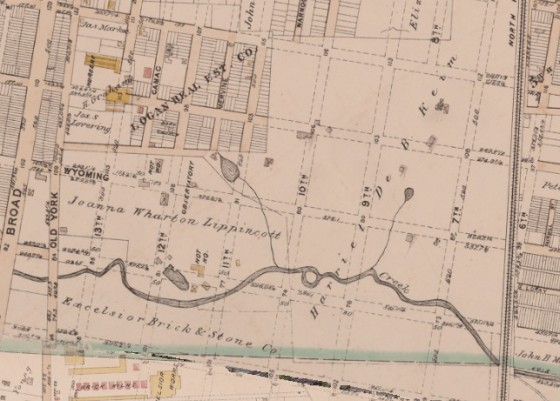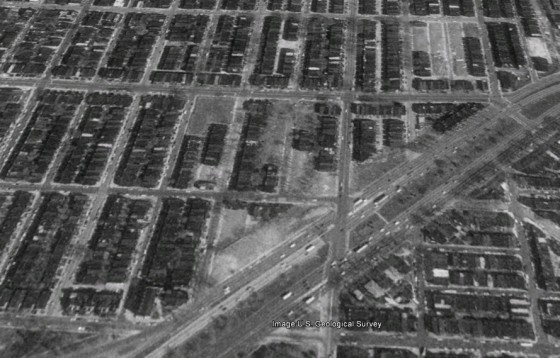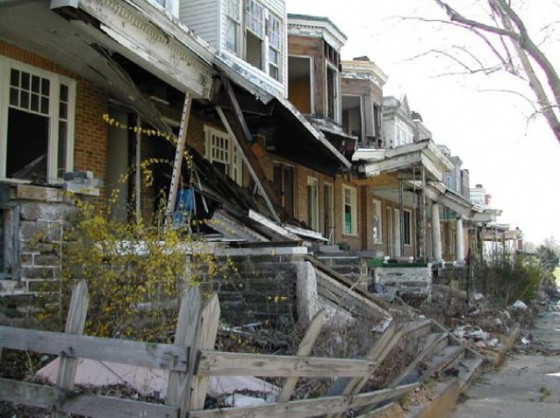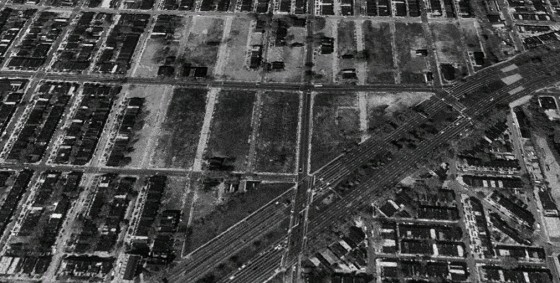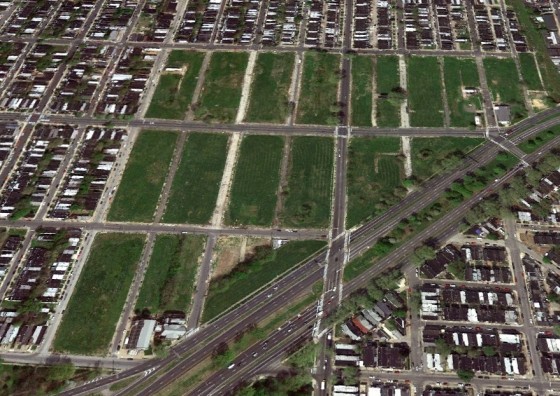In the Logan section of North Philadelphia, there lies a highly mysterious area bounded by Wingohocking, Louden, 11th St., and Roosevelt Blvd. Here, a crumbling grid of streets run through 35 acres of empty lots. It goes by many names: Philly’s Bermuda Triangle, Logan Triangle, and several local colloquialisms, but we prefer to call it the Dead Zone.
This area once contained the Winghocking Creek and some of its tributaries. The entire area around the creek was quite sunken, so in 1910, when the Boulevard was being plotted and development starting passing through, the section was filled with ash and cinder. In some areas, the fill was 40 feet deep. Rowhouses were built here by the late teens by the Realty Development Company.
Flash forward 7 decades to the early 1980’s. The homes in this little region were cracking, sinking, and falling apart so severely that they were uninhabitable, some since the 1950’s. Many of the houses floated on a sea of soft ash without any stable foundation. In 1986, the city commissioned a geotechnical study of the location by Lippincott Engineering Associates that determined that this place was doomed. A non-profit organization was created to take on the herculean task of relocating the residents of the 933 buildings included in the study. Purchase and demolition of the structures took yearly 20 years and $33M.
Starting in 1994, several groups, including the Planning Commission, the Redevelopment Authority, the U.S. Army Corps of Engineers, and a few developers have been trying to come up with a plan of how to make this Dead Zone viable once again. In 2002 and 2003 plans were thrown around to rezone the location and build a hospital or retail complex. Both Bart Blatstein and the Goldenberg Group presented retail plans for the site in the mid 00’s that never materialized. Once the economy went bad, any kind of project for the Dead Zone became unfeasible.
The site also has its share of development nightmare situations. The ground still needs to be fixed, private owners still possess some of the parcels, and a number of properties are tax delinquent. So at this point, what can be done with this spot? Is new building construction the answer? Early last year, in a story about the Dead Zone, Plan Philly reported that the Mayor’s Office of Sustainability had some eco-friendly suggestions for this land mass. They conceived the possibility of turning it into a tree nursery, farmer’s market, community gardens, or all of the above. Perhaps the best idea for the Dead Zone is turning it into a permanent Green Zone. Sounds pretty good to us.
–GroJLart, philaphilia.blogspot.com

